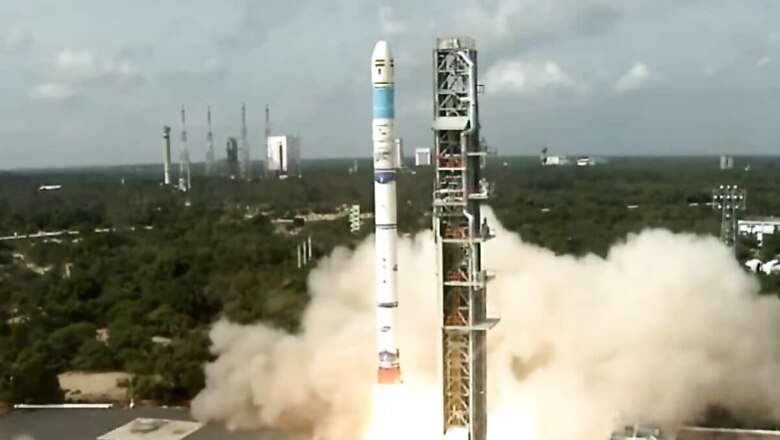
views
The Indian Space Research Organisation (ISRO) on Friday successfully launched an earth observation satellite, onboard the third and final development flight of Small Satellite Launch Vehicle (SSLV) mission.
The spacecraft carrying SSLV-D3-EOS-08 satellite lifted off from the first launch pad at Satish Dhawan Space Centre in Andhra Pradesh’s Sriharikota at 9:17 on Friday.
#WATCH | ISRO (Indian Space Research Organisation) launches the third and final developmental flight of SSLV-D3/EOS-08 mission, from the Satish Dhawan Space Centre in Sriharikota, Andhra Pradesh.(Video: ISRO/YouTube) pic.twitter.com/rV3tr9xj5F
— ANI (@ANI) August 16, 2024
The ISRO in a post said that the satellite has been placed into the precise orbit. The successful launch of this satellite marked the completion of ISRO/DOS’s SSLV Development Project.
SSLV-D3/EOS-08 Mission:✅The third developmental flight of SSLV is successful. The SSLV-D3 placed EOS-08 ️ precisely into the orbit.
This marks the successful completion of ISRO/DOS’s SSLV Development Project.
With technology transfer, the Indian industry and…
— ISRO (@isro) August 16, 2024
Students, children and local also gathered at the space centre to witness the launch of the Small Satellite Launch Vehicle.
VIDEO | Children and locals gather to watch the launch of ISRO’s Small Satellite Launch Vehicle-03 (SSLV-D3-EOS-08) at Satish Dhawan Space Centre, #Sriharikota, Andhra Pradesh. (@isro)(Full video available on PTI Videos – https://t.co/n147TvqRQz) pic.twitter.com/YdfGaQpAkN
— Press Trust of India (@PTI_News) August 16, 2024
Initially, the satellite was planned to be launched on August 15 at 9.17 am and was later rescheduled to August 16.
The SSLV rocket, 34 meters in height, three-stage launch vehicle with a diameter of 2 meters, is designed to carry a ~500kg satellite into a 500km planar orbit. It has a lift-off weight of around 120 tonnes.
The SSLV’s smallest rocket carrying a 175.5-kilogram Earth Observation Satellite (EOS-8) is equipped with three payloads: an electro-optical infrared payload, a global navigation satellite system reflectometry payload, and a silicon carbide ultraviolet dosimeter.
The first payload EOIR is designed to capture images in the Mid-Wave IR (MIR) and Long-Wave IR (LWIR) bands, both during the day and night, for applications such as satellite-based surveillance, disaster monitoring, environmental monitoring, fire detection, volcanic activity observation, and industrial and power plant disaster monitoring. The second GNSS-R payload demonstrates the capability of using GNSS-R-based remote sensing for applications such as ocean surface wind analysis, soil moisture assessment, cryosphere studies over the Himalayan region, flood detection, and inland waterbody detection. The third payload — SiC UV Dosimeter monitors UV irradiance at the viewport of the Crew Module in the Gaganyaan Mission and serves as a high-dose alarm sensor for gamma radiation.
The spacecraft has a mission life of one year which generates power of around 420 W. The satellite interfaces with the SSLV-D3/IBL-358 launch vehicle, the space agency said.
The primary goals of the mission include designing and developing a microsatellite, creating payload instruments compatible with the microsatellite bus, and incorporating new technologies required for future operational satellites, ISRO said.
The mission would also give a boost to NewSpace India Ltd, the commercial arm of ISRO to take up commercial launches using such Small Satellite Launch Vehicles with the industry.
The SSLV-D3-EOS-08 mission follows the second successful launch of the second test flight of the Small Satellite Launch Vehicle (SSLV-D2-EOS-07) in February 2023. This mission is the third for space agency in 2024, after the successful PSLV-C58/XpoSat in January and GSLV-F14/INSAT-3DS missions in February.
(With inputs from PTI)

















Comments
0 comment